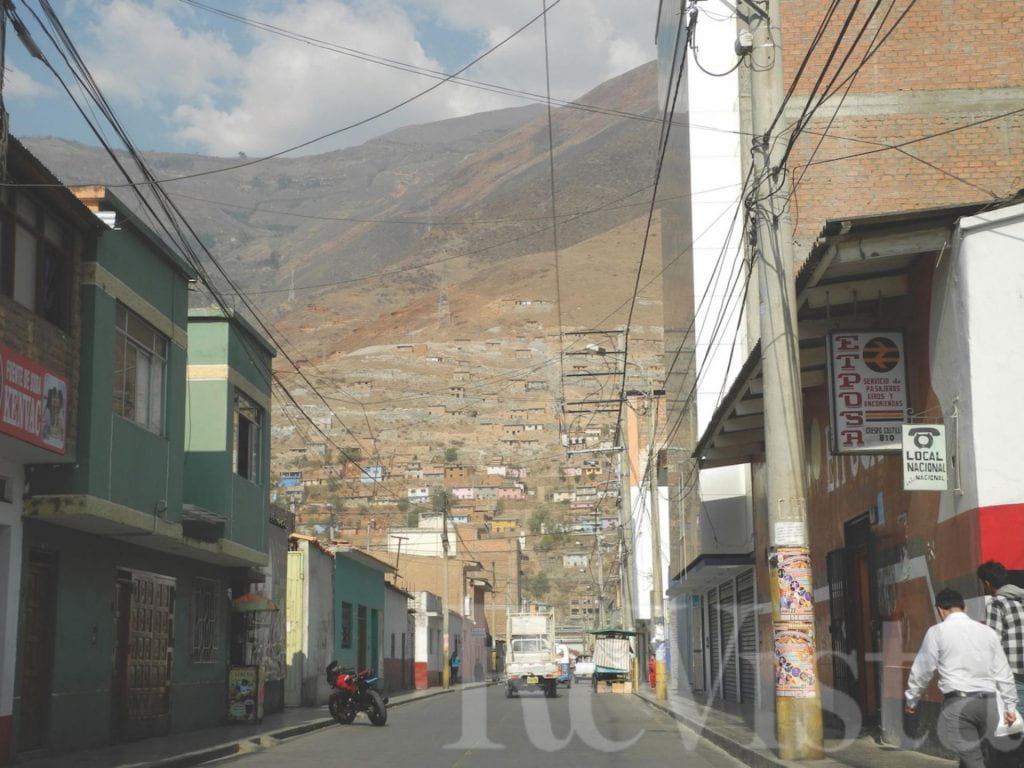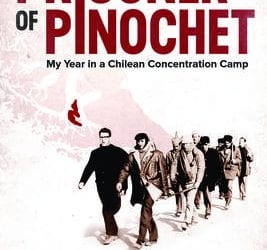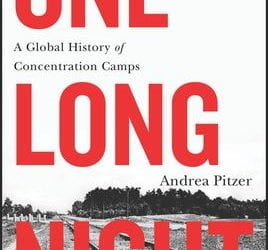Climate Change and Food
Challenges and Opportunities in Tropical Mountains and Agrobiodiversity Hotspots
The rains had just begun in Huánuco in central Peru when we arrived in early February 2016. This time of year is usually midway through the roughly six-month rainy season that stretches from October to May. Instead, the unseasonal heat and months of drought that year were a shock to people in Huánuco—and to us. Only a week or two earlier, we were told, the landscape of the Húanuco valley had resembled the drab brown of the height of the dry season. We had just begun a project focused on biodiversity (agrobiodiversity) in the food landscapes of indigenous small landholders, as well as on their dietary patterns amid dynamic changes in the environment and society. We’re a diverse team of faculty, scientists, field practitioners and students from multiple institutions. In Peru, we’re headquartered at the Instituto de Investigación Nutricional (IIN) in Lima. In Huánuco, we’ve been able to build on the superb work of local, national and international organizations that include agrobiodiversity experts such as Milka Tello and her colleagues and students at the Universidad Nacional Hermilio Valdizan de Huánuco (UNHEVAL). Other members of our team are associated with the International Center for Tropical Agriculture (CIAT) and the Universities of Michigan, Pennsylvania State and Birmingham
Bridging the Andes and the Amazon, Huánuco is widely recognized as a global agrobiodiversity hotspot. This designation means that Huánuco farming and food systems are distinguished by excep-tional concentrations of agrobiodiversity currently endangered. This risk emanates from such forces as agricultural, cultural and socioeconomic changes. The double meaning of “hotspot” quickly acquired a third dimension owing to the climate change impacts being felt in Huánuco. It is not only the climate that is changing. Closely related to environmental changes are loss of resources and livelihoods, poverty and development changes that often work to undermine the production and consumption of agrobiodiversity.
The mile-deep trench of the Río Huallaga and its tributaries in Huánuco, like many of the major valleys of the Andes Mountains, have quite unusual environments and unique biodiversity. Although locals are accustomed to the extreme seasonality of weather, this variability has increased. Drought and heat in the Andes often coincide with the El Niño-driven warming of the Pacific Ocean with heavy rains and floods in the coastal lowlands. This time, however, an extended drought was already underway in Huánuco and other Andean regions before the ocean events of the past year.
In 2017, El Niño Costero (coastal El Niño) triggered catastrophic floods in Peru and Ecuador, a continuation of the strong El Niño effect from the two previous years. Global-scale climate change driven by the greenhouse gas emissions of industrial countries has continued to increase the strength and frequency of these events. The Costero demonstrated the regional warming of the Pacific Ocean off the western coast of South America.
Elevated temperatures also accelerated the melting of mountain glaciers. Peru’s glaciers have shrunk by more than forty percent in past decades. Though less publicized, the extremes of droughts warming and hailstorms have worsened in Huánuco and the major valleys of the Andes from Colombia and Venezuela to northern Argentina and Chile. Both the people and diverse environments of the Andean valleys have become another leading edge of global climate change impacts.
The major impact of these climate changes falls on the indigenous people, the majority of Huánuco’s population, who produce and consume the highest levels of agrobiodiversity. In the Andes region of Huánuco, most speak the Quechua language intermixed with Spanish. These indigenous people range from agriculturalists residing in rural areas to their family members and migrant counterparts who live as first- and second-generation urbanites. Their role as consumers of agrobiodiversity remains crucial, though food consumption is changing in the Andes with profound consequences for health.
Food and nutritional insecurity are widespread among indigenous people in the Andean countries. Climate change compounds the vulnerability of these indigenous people, especially in drought-prone valley environments such as Huánuco. Rain-fed agriculture in the Andes has also become increasingly prone to out-of-season extreme weather events such as hail and frost (for example the widespread frost of 2007). Mountain and hill areas more generally, which extend widely in Latin America and the Caribbean as well as Asia and Africa, once functioned as indigenous “regions of refuge” though they have become subject to major impacts and spatial integration involving national and global forces.
Preliminary Results of the Huánuco Agrobiodiversity-Nutrition-Health Project (2016-2017)
Agriculture and food production are greatly affected by climate change. Meanwhile, the individual and the community can use food choice as a pivotal way to exert influence on the environment. To the indigenous small landholders of Huánuco, these climate interactions run directly through their myriad foodways. These foodways are culturally distinctive, nutritionally vital and always evolving. The use of cultivated, semi-wild and wild foods depends on such factors as skills and knowledge, typically wielded by women. Women’s access to resources is therefore critically important.
For the sake of brevity we focus on a few foods that illustrate the interactions with climate change. One is tocosh (spelled toqush in the Quechua of Huánuco). It is prepared most often through the anaerobic (without oxygen) fermentation of the local potato landrace known as walas, resulting in a favorite low-cost food valued for nutrition, medicinal use and flavor. Quite odorous and resembling aged cheese, tocosh is fermented from six to eighteen months.
Another food experiencing the effects of climate change is Andean maize. In Húanuco the most important maize-based foods are a hominy-style preparation known as mote and kernels parched as kancha. Both tocosh and maize, easy to include in various food preparations and to transport, can be readily made into flours that contribute to food security. Such foods—popular throughout Huánuco—are central to the issues of agrobiodiversity, nutrition, health and climate change.
Preliminary results of our project make use of surveys of 600 households of indigenous small landholders and additional in-depth interviews completed with 37 individuals and households. Most of those interviewed gave us detailed examples of climate change effects on food and agriculture. One example is the preparation of tocosh, which is typically undertaken outdoors and requires water at various stages. Several interviewees mentioned how tocosh-making is threatened because of diminishing water supplies due to climate change.
Andean maize also offers a number of important examples. Today the production and consumption of distinct Andean maize is very important in mountains valleys from Colombia and Venezuela to points as far south as Argentina and Chile. Huánuco small landholders are recognized as producing and consuming the greatest biodiversity of Andean maize in Peru, which at the national level is second only to Mexico in the diversity of this crop.
Maize foods grown as staples in local diets and nutrition are complemented by the widespread growing and consumption of beans. The suite of cultivated legumes includes Andean common beans, Andean lupines, broad or fava beans, and peas. More than half of the people surveyed in Huánuco cultivated maize in fields with beans and other crops in addition to gathered wild foods. One person remarked that the rich, multi-species biodiversity of a maize field typically resembles a garden.
Certain types of Andean maize are well-suited to the flexible scheduling of planting and harvest that is vital to farmers facing climate change. For this purpose, they select among the local varieties of Andean maize (also known as landraces) that can mature more quickly. The highly varied maturation period makes it far easier to resist the effects of climate change.
Huánuco farmers rely especially on the category of maize landraces known as wansa that better withstands heat and drought. Defined as the group of maize landraces best suited for the preparation of mote (mentioned above), wansa maize is made up of prominent types such as morocho. In short, the farmers’ food-based classification of the wansa category of Andean maize also guides adaptive capacity in the context of climate change.
Andean maize is also well-suited to another of the major adjustments farmers make to climate change, namely upslope movement. This shift is particularly promising for maize. The interviewees described the idea to move their fields of maize upslope by 250-400 meters of elevation as the result of climate shifts. By contrast, they are being forced to reduce the production of Andean potatoes and tuber crops since the area suitable for planting them at high elevation is shrinking.
As the Huánuco farmers consider moving their fields, they choose among a category of maize landraces known as gapia, which has the adaptive capacity for upslope movement. The culinary category of gapia, which they define as the maize types suitable for the preparation of parched kancha (mentioned above), is comprised of locally valuable landraces such as chuspillu. This use of gapia maize therefore offers another prominent example whereby the food-based classification of Andean maize offers information that is important to farmers in considering potential adaptations to climate change.
But the vulnerable conditions of Huánuco’s indigenous smallholders may eclipse such adaptive capacities. For now, fewer than half of those interviewed have actually moved their fields of maize upslope. Reasons vary, from lacking access to upslope fields to broader decisions to curtail parts of their agriculture and engage further in non- and off-farm activities. One key interviewee detailed how she and her neighbors had lost access to their upslope fields because of the government’s misguided land reform.
Meanwhile in the hotter, lower eleva-tions of maize-growing some farmers have experienced water shortages caused by climate-change impacts on their important community-wide management of irrigation. In sum, these preliminary results demonstrate how the production and consumption of biodiverse foods among Huánuco’s indigenous small landholders show both adaptive capacity and vulnerability in relation to climate change and food and nutritional security.
Unfortunately, this vulnerability is compounded further by the expanding consumption of low-cost, industrially produced food. Such items include rice, wheat noodles, cooking oil and sugar including sugar-containing beverages and low-cost industrialized snack foods. These food choices are driven by ready availability and the rapid changes of livelihoods and lifestyles, as well as poverty.
Preferences for food that is perceived as more “modern” and part of mainstream, national cultural and racial identities also play important roles. The consequences include high rates of food and nutrition insecurity among the indigenous small landholders of Huánuco. Nearly one half of those surveyed in our research had experienced food insecurity while a similar number noted the inadequacy of diversity in their diets. These trends are in sharp contrast to the culinary glamor and cultural celebration of Andean foods in the capital of Lima and elsewhere.
The local decline of agrobiodiversity is being exacerbated by Peru’s national policies and several international policies. Although too complicated a theme for this short article, examples extend well beyond the Peruvian agrarian reform mentioned above. The conditional cash transfer program in Peru known as Juntos, for example, offers assistance to mothers in conditions of poverty. It does not, however, provide nutritional advice or education that would be culturally appropriate and include locally available fresh foods. Meanwhile the climate change adaptation and risk-alleviation projects favored by the international community have often favored the import of low-quality industrial foods rather than the strengthening of local food systems.
Support Institutions and What Next?
In light of the challenges described above, several organizations are committed to strengthening the adaptive capacity and resilience of the livelihoods of indigenous people in contexts of climate change. These include government and international agencies as well as non-governmental organizations. Since the beginning of our work, we’ve been mindful that our project depends on large numbers of extraordinary institutions, collaborators, colleagues and related work undertaken in Peru and elsewhere. These influences include both our current networks and the various outstanding legacies of diverse specialists, both in Huánuco in particular and also more widely.
Many of their climate-related initiatives focus on physical and social infrastructure for improved water resource management. Our research results demonstrate the urgent need for agriculture and food systems to become foundations of these climate projects. Vulnerability and resilience, in addition to adaptive capacity, needs to be addressed. Without such integration, attempts to address climate change may reinforce the trends of food and nutrition insecurity.
Our project is utilizing these research results to offer specific insights and practical, forward-looking solutions integrated across the fields of agrobiodiversity, nutrition and public health. We’re committed to creating insights that will be operational in the context of dynamic environmental, sociocultural, and economic circumstances.
In sum, the agrobiodiversity of indigenous smallholders is diminishing in Huánuco at a time when it is most needed. This need is vital for addressing the goals of food and nutritional security in addition to sustainability, not only in Huánuco, but more broadly in Peru and globally. The farmers and workers in food systems with whom we collaborate are showing us that global climate change, in addition to the shifts of urbanization, migration and markets, can potentially be compatible with the use of agrobiodiversity in their food systems.
But other powerful forces are under-mining these goals. In particular, the expansion of cheap food in industrial food systems poses a serious risk. These intersecting challenges have become a major juggernaut confronting the prospect of a sustainable future.
Fall 2018, Volume XVIII, Number 1
Karl Zimmerer, the 2016 DRCLAS Custer Visiting Scholar, is a professor in the department of geography and the department of agricultural economics, sociology, and education at Pennsylvania State University, where he also directs the GEOSyntheSES lab (https://zimmerergeosyntheses.psu.edu/). Zimmerer’s recent publications include “Agrobiodiversity and A Sustainable Food Future” (Nature Plants, 2017, with Stef de Haan) and “Territorial Ordering’: A new mode of land use planning for urban-rural integration and next-generation conservation” in The Urban and the Territorial: Housing in Mérida (2017) edited by Diane E. Davis and her colleagues at the Harvard Graduate School of Design.
Andrew Jones is with the School of Public Health at the University of Michigan.
Stef de Haan and Gisela Cruz García are with the International Center for Tropical Agriculture (CIAT).
Hilary Creed-Kanashiro, Miluska Carrasco and Krysty Mesa are at the Investigación Nutricional in Lima, where Franklin Plasencia Amaya is a consultant.
Milka Tello is a faculty member in agricultural sciences at the Universidad Nacional Hermilio Valdizan de Huánuco (UNHEVAL).
Ramzi Tubbeh is a Peruvian Ph.D. student at Pennsylvania State University.
The authors acknowledge the support of the Daniel and Nina Carasso Foundation and Zimmerer also thanks DRCLAS and Tony Custer for their support.
Related Articles
Words that Matter
Those of us with little children often read The Lorax by Dr. Seuss to them at bedtime. The story points toward the past, because the Lorax is a ruin, with only residues remaining of something…
Prisoner of Pinochet: My Year in a Chilean Concentration Camp
English + Español
On September 11, 1973, at about eight o’clock in the morning, Sergio Bitar, one of Allende’s top economic advisers and the Minister of Mining, received a phone call from a colleague: the
One Long Night: A Global History of Concentration Camps
English + Español
In One Long Night: A Global History of Concentration Camps, Andrea Pitzer offers a thoughtful combination of investigative journalism and historical analysis that identifies the roots and





